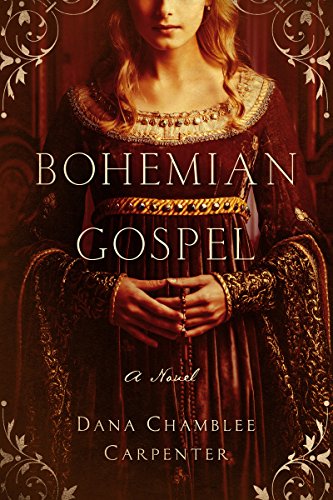Bohemian Gospel
Mouse is fifteen, has no baptised name and no parents, and lives in a monastery in 13th-century Bohemia (now the Czech Republic). However, Teplá Abbey is no home to this strange girl. Mouse is distrusted by its inhabitants for her uncanny abilities, and – as one unbaptised – certainly cannot become a nun. Life changes radically for Mouse when the Younger King, the eighteen-year-old Ottakar, is brought to the monastery with an arrow in his chest. Mouse, trained as a healer, saves his life, and Ottakar, still weak, takes her back with him to Prague.
Bohemian Gospel is an historical novel with fantastical elements set within the rein of the ‘Golden and Iron King’, Ottokar II of Bohemia. As Mouse aids Ottakar in his struggle against his deranged father and fractious nobles, the two fall in love. However, there can be no happy ending between a nameless girl and a king in need of political allies. Thus on one level, Bohemian Gospel is a tragic romance. On another, the tale centres on the mystery of Mouse’s parentage and supernatural abilities. Mouse discovers more and more about her powers as she battles against evil spirits, lustful men, and finally her own nature. Finally, the novel’s title is explained when Mouse seals herself away to produce the famous Codex Gigas, the world’s largest medieval manuscript.
In those parts of the tale in which Mouse must counter threats, the novel is a compulsive read, full of historical and supernatural (yet historically-founded) detail. However, there are significant stretches in which the tale lacks narrative drive. Mouse’s sufferings are set at a distance by the author’s ‘telling’ of emotions, and there are occasional point-of-view slips. I enjoyed the unusual historical setting and the novelistic explanation of the Codex, but overall Bohemian Gospel was a little disjointed and the writing patchy.










